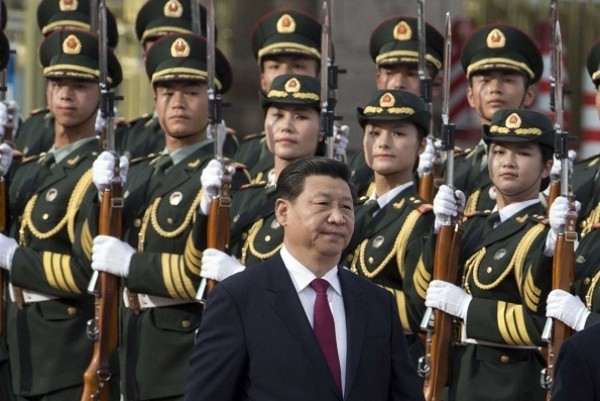| On August 1st China celebrates the 91st anniversary of the founding of PLA | |

| Author: Matej Balen |
| 1st August 2018 |
| BEIJING – This year’s Chinese Army’s Day comes during the ongoing national reforms under the leadership of Xi Jinping, who heads the CPC Central Committee and the Central Military Commission. |
|
Main celebration of the founding of People's Liberation Army (PLA) was held two days prior to August 1st, at the reception organised by the Ministry of National Defence in Beijing. The Minister of National Defence, Wei Fenghe, extended Army Day greetings to the personnel of the PLA, the Armed Police Force, the reserve force, the militia, veterans, army heroes and role models, among others. The Minister stated that China will firmly stay on the path of peaceful development, pursue a national defence policy that is in nature defensive, and work with other countries to promote the Belt and Road Initiative. China will promote the building of a new type of international relations, build a community with a shared future for humanity, and continue its efforts to safeguard world peace, contribute to global development, and uphold international order, he noted. There is only one China, and Taiwan is an inalienable part of Chinese territory, said the defence minister, pledging that the PLA has the means, the confidence, and the ability to defeat separatist attempts for "Taiwan independence" in any form and any external interference. In the statement issued by China's Central Military Commission (CMC), that takes effect on August 1st, the two new regulations give additional responsibility to Communist Party members to govern, supervise, inspect and discipline all levels within the military. The regulations will also help improve the conduct of Party members, tighten discipline and fight corruption in the military, the statement said.
PLA was founded on 1 August 1927 during the Nanchang uprising, and they were at that time known as the Red Army. Between 1934 and 1935, the Red Army survived several campaigns led against it by Chiang Kai-Shek (Kuomintang) and engaged in the Long March. During the Second Sino-Japanese War from 1937 to 1945, the Communist military forces were nominally integrated into the National Revolutionary Army of the Republic of China. After the Japanese surrendered in 1945, they were renamed into the "People's Liberation Army", and later on won the Chinese Civil War, establishing the People's Republic of China in 1949. During the 1950s, the PLA with Soviet assistance began to transform itself from a peasant army into a modern one. In the next 60 years, during numerous international conflicts, economic instabilities, and different positive and negative government policies affecting them, PLA was gradually growing in size and in the last two decades was able to modernise its equipment and military strategy. Today, the PLA is the world's largest military force, with a strength of approximately 2,300,000 personnel, 0.2% of the country's population. It is the fastest modernising military power in the world, with significant defence and increasing power projection capabilities. Recently, it has been rapidly developing and commissioning new arsenals, with numerous technological advancements and breakthroughs, as stated by many military reports. As a prominent member of the United Nations, China’s PLA is often sent to various hotspots, especially in Africa and the Middle East. |